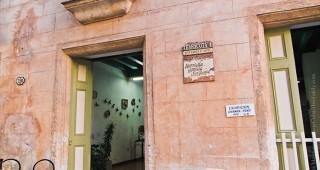Across from Parque Central, the Tacón Theater was inaugurated in April, 1838. At the time, this was Havana’s most important theater and arguably one of the best in the continent for its elegance, comfort and exceptional technical preparation. Years later, in 1914, the theater itself and the buildings around it were purchased to build in that location the Centro Gallego, which took up the entire block.. The construction of this center, one of the most important of its kind in the city, was commissioned to the US Company Purdy & Henderson. Inside, the old Tacón Theater was remodeled, integrating it with the new elements.
The façades of this building can only be described as magnificent. Decorated with sculptures and other stone adornments, as well as marble and bronze works. The frontage features four groups of sculptures in white marble by Giuseppe Moretti representing charity, education, music and theater.
In 1961, on the occasion of the 25th anniversary of García Lorca’s death, the board of the Centro Gallego announced that the theater would change its name to that of the Grenadian poet. Then in 1981, the entire complex changed its name to Complejo Cultural del Gran Teatro García Lorca, now under Prima Ballerina Assoluta and Director of the National Ballet, Alicia Alonso. Finally, in 1985, it received the name of Gran Teatro de La Habana, as it is known today. The theater hosts many international events throughout the year and is home to the Ballet Nacional de Cuba.






 Eclectic
Eclectic




